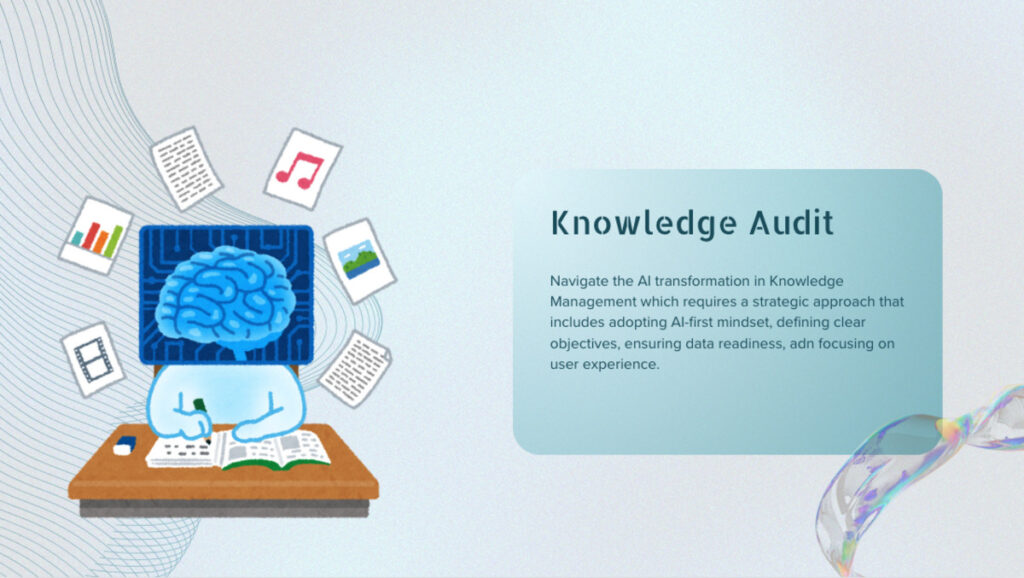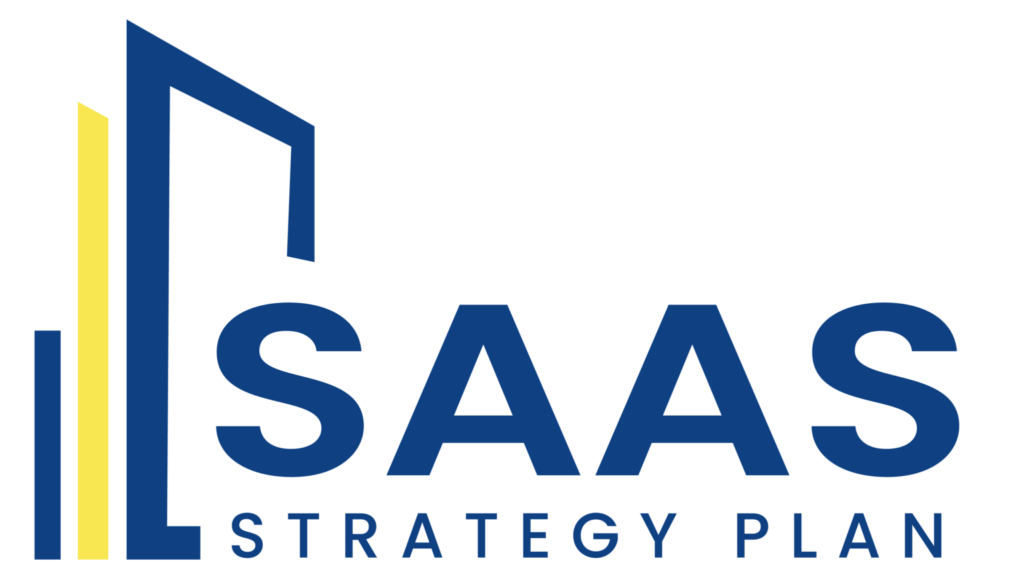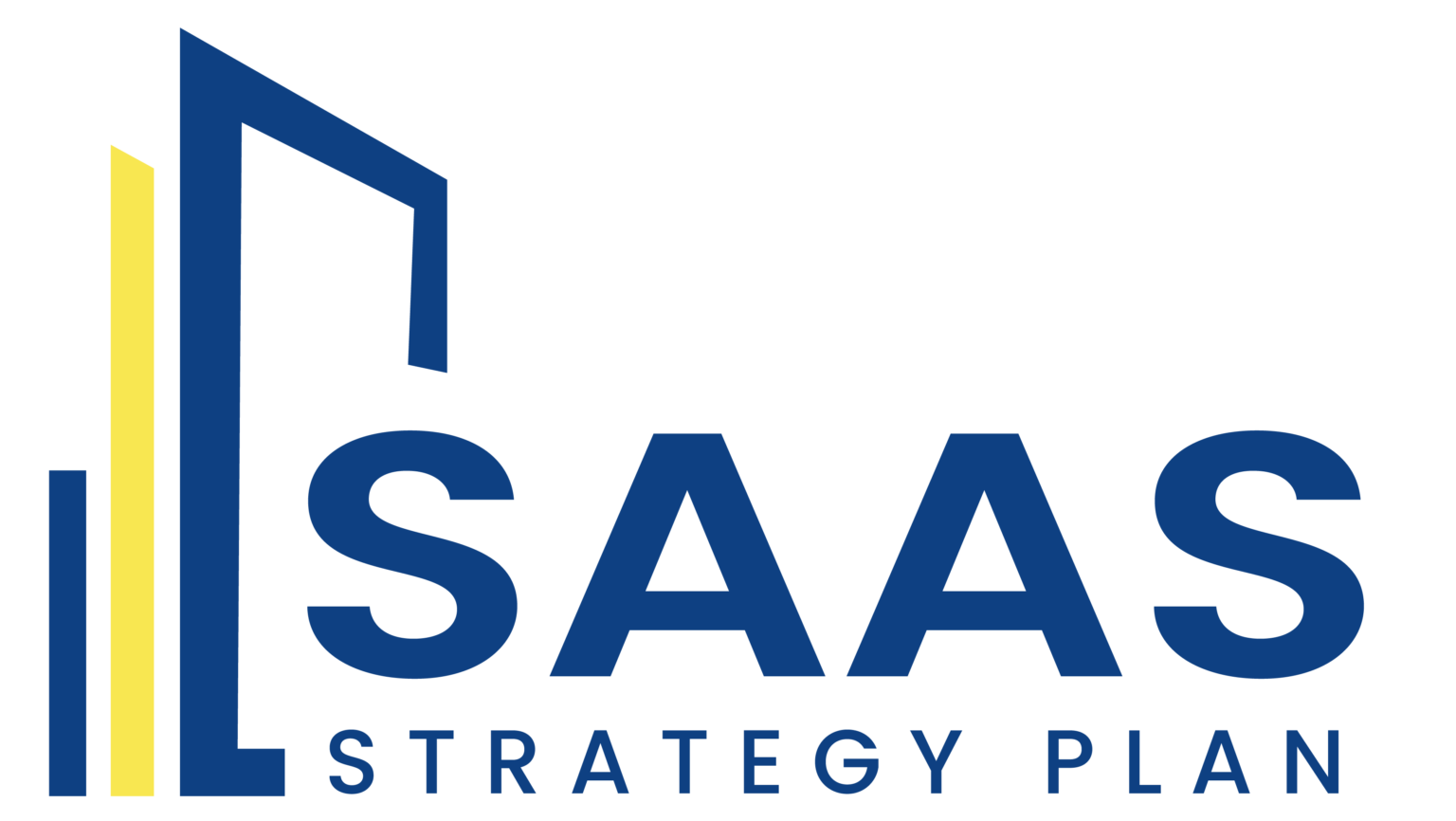For SaaS companies in the knowledge management space, effectively managing and leveraging knowledge isn’t just a value-added service—it’s the core of your business. As organizations increasingly rely on digital solutions, the ability to capture, organize, and share knowledge efficiently is crucial for maintaining a competitive edge. Integrating AI into your knowledge management (KM) strategy can take your offerings to the next level, but how do you build a strategy that not only meets your clients’ needs today but also positions them for future success?
Start with the Basics: Understanding Knowledge Needs
Before diving into AI and advanced tools, the first step is understanding what your clients truly need. What are their business goals? What knowledge do they already have, and how is it currently being used? This involves taking a close look at their current state of knowledge. A knowledge audit is a great way to map out existing resources, identify gaps, and determine what’s missing.
Think of this as helping your clients clean out their digital closets before adding new tools. They need to know what they have and what they need before making any new investments.
Encourage a Culture of Sharing and Learning
One of the most important aspects of a KM strategy is fostering a culture where sharing knowledge is second nature. This goes beyond just providing the right tools; it’s about helping your clients create an environment where people feel encouraged to share what they know and to learn from others.
Continuous learning should be a core value within their organizations. When employees are comfortable sharing their expertise and are eager to learn from one another, the KM strategy you help them implement will have a solid foundation.
Organize and Architect Knowledge for Easy Access
After cataloging knowledge, the next step is to organize it in a way that makes sense for your clients. This is where knowledge architecture comes into play. The goal is to ensure that everyone in the organization can easily find and use the knowledge they need.
Consider how their knowledge is structured—are documents and resources easy to search for? Is there a logical flow? By helping create a user-friendly knowledge architecture, you ensure that knowledge assets are not just stored away but are actively used to improve efficiency and productivity.
Maintain Quality with Governance and Processes
Knowledge is only valuable if it’s accurate and up-to-date. Establishing clear governance and processes to maintain the quality of your clients’ knowledge is crucial. This means setting up protocols for how knowledge is captured, stored, and regularly updated.
Good governance ensures that the KM strategy continues to deliver value as the organization grows and evolves. It’s about keeping knowledge assets relevant and reliable, which in turn supports better decision-making and innovation.
Choose the Right Knowledge Management Software
The right KM software is the backbone of any successful strategy. It should align with your clients’ goals and make it easy for employees to share, find, and use knowledge. A good KM system integrates seamlessly into daily operations, supporting both immediate needs and future growth.
When helping clients choose software, consider how it will support AI integration in the future. The right platform should not only meet current requirements but also be flexible enough to grow with the organization.
Integrating AI into a Knowledge Management Strategy
AI can elevate a KM strategy by automating the organization, retrieval, and dissemination of knowledge. Imagine a system that doesn’t just store information but also helps employees find exactly what they need—even before they know they need it. AI can sift through massive amounts of data, identify patterns, and offer valuable insights.
However, AI is just a tool. Its effectiveness depends on how well it’s integrated into a culture that values knowledge sharing and continuous improvement. AI should enhance human expertise, not replace it. Balancing technology with a strong human element is key to a successful KM strategy.

Involve Your Team: A Collaborative Approach
Building a KM strategy isn’t a solo effort. It’s important to involve people from different parts of the organization to get a well-rounded perspective. This collaboration ensures that the strategy is inclusive and meets the diverse needs of the company.
By bringing in different voices, you can help create a KM strategy that not only addresses current challenges but also positions the organization for future success. The result? A strategy that’s not only comprehensive but also adaptable, ready to evolve as the business grows.
Conclusion: Building for the Future
Creating a knowledge management strategy that leverages AI is a smart move for any SaaS company focused on knowledge management solutions. By starting with a clear understanding of your clients’ goals, fostering a culture of sharing, organizing knowledge effectively, maintaining quality, choosing the right tools, and integrating AI thoughtfully, you can help build a KM strategy that not only meets today’s needs but also sets your clients up for long-term success.
With the right strategy in place, organizations can harness the power of knowledge to drive innovation, improve decision-making, and maintain a competitive edge in an ever-changing business landscape.


